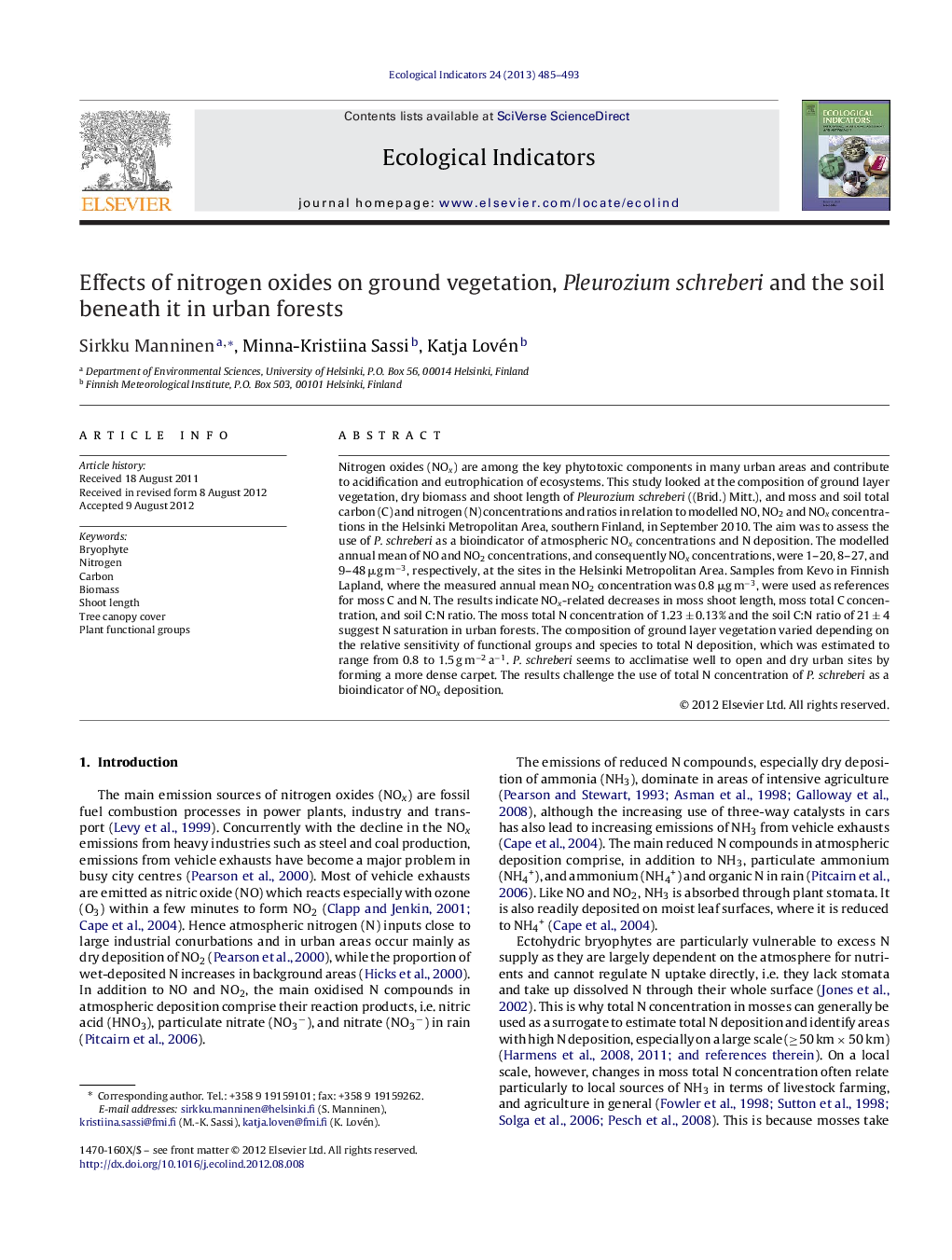| Article ID | Journal | Published Year | Pages | File Type |
|---|---|---|---|---|
| 4373668 | Ecological Indicators | 2013 | 9 Pages |
Nitrogen oxides (NOx) are among the key phytotoxic components in many urban areas and contribute to acidification and eutrophication of ecosystems. This study looked at the composition of ground layer vegetation, dry biomass and shoot length of Pleurozium schreberi ((Brid.) Mitt.), and moss and soil total carbon (C) and nitrogen (N) concentrations and ratios in relation to modelled NO, NO2 and NOx concentrations in the Helsinki Metropolitan Area, southern Finland, in September 2010. The aim was to assess the use of P. schreberi as a bioindicator of atmospheric NOx concentrations and N deposition. The modelled annual mean of NO and NO2 concentrations, and consequently NOx concentrations, were 1–20, 8–27, and 9–48 μg m−3, respectively, at the sites in the Helsinki Metropolitan Area. Samples from Kevo in Finnish Lapland, where the measured annual mean NO2 concentration was 0.8 μg m−3, were used as references for moss C and N. The results indicate NOx-related decreases in moss shoot length, moss total C concentration, and soil C:N ratio. The moss total N concentration of 1.23 ± 0.13% and the soil C:N ratio of 21 ± 4 suggest N saturation in urban forests. The composition of ground layer vegetation varied depending on the relative sensitivity of functional groups and species to total N deposition, which was estimated to range from 0.8 to 1.5 g m−2 a−1. P. schreberi seems to acclimatise well to open and dry urban sites by forming a more dense carpet. The results challenge the use of total N concentration of P. schreberi as a bioindicator of NOx deposition.
► The use of bryophytes as bioindicators of atmospheric N deposition is challenged by a non-linear accumulation of N in moss tissue. ► Direct negative effects of NOx are suggested by decreases in lichen cover, moss shoot length and moss total C concentration. ► Urban forests in northern Europe may become N saturated at 0.8–1.5 g N m−2 a−1. ► Pleurozium schreberi acclimates to open urban forests by increasing biomass production per surface area.
